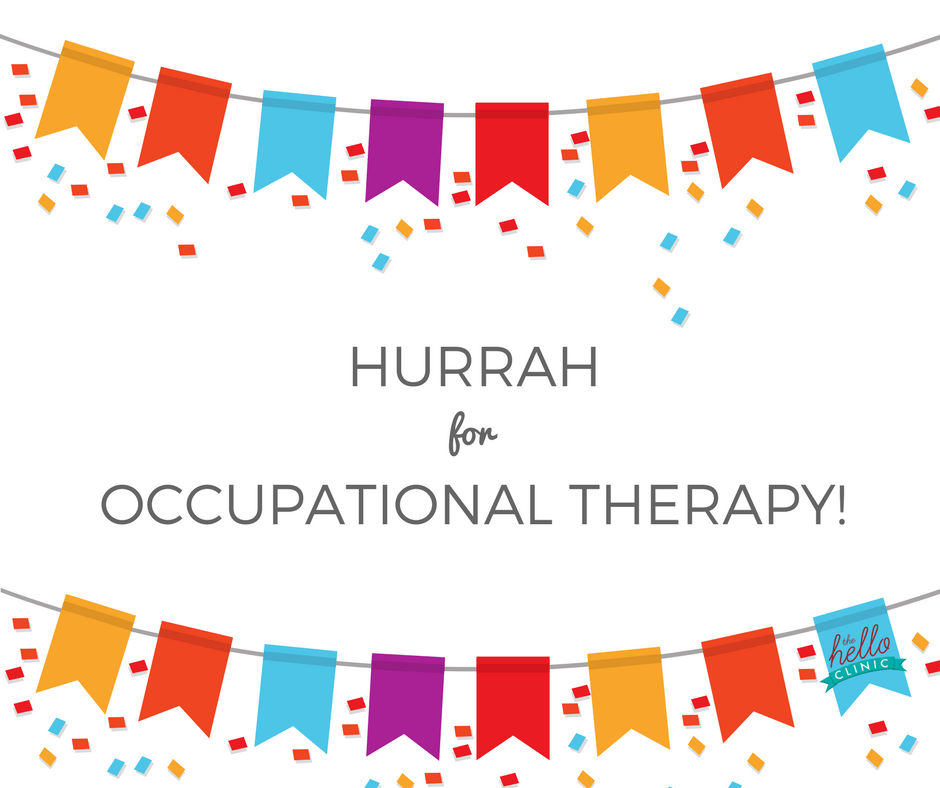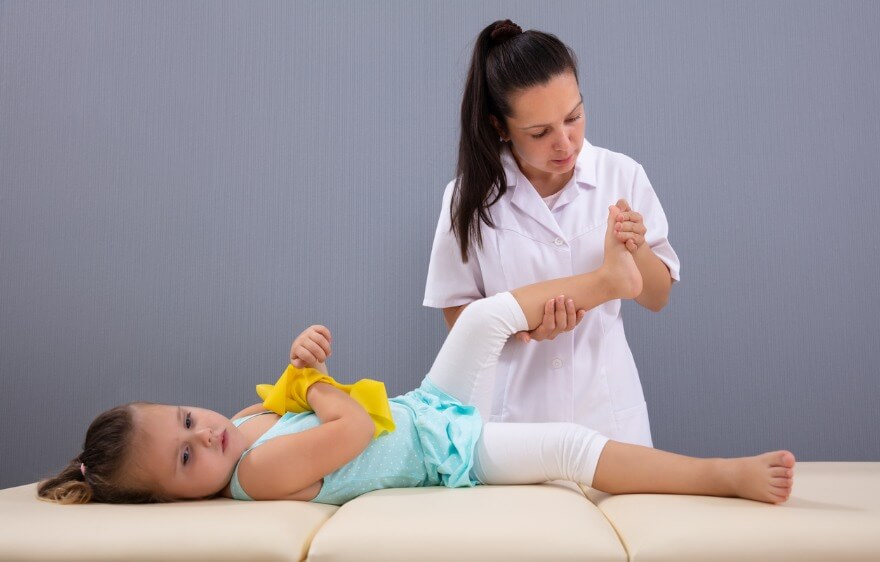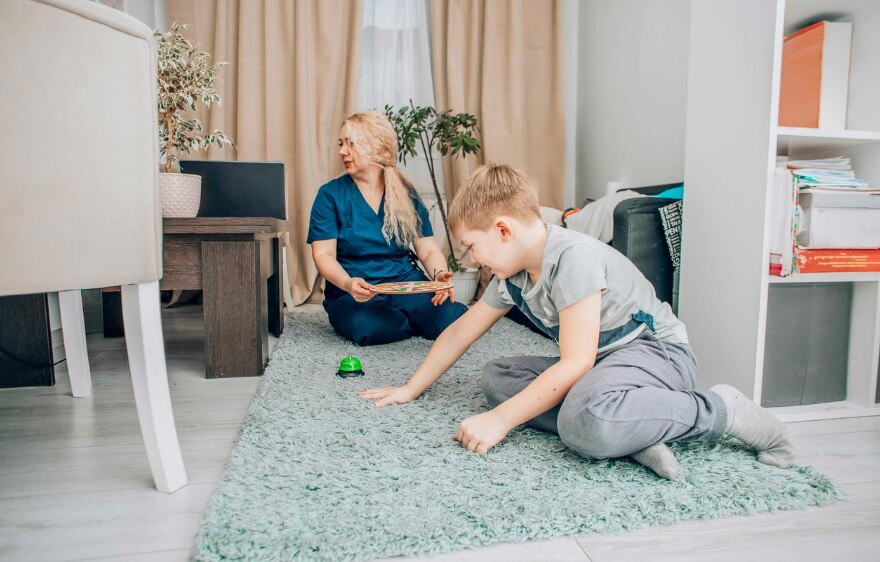April marked the 100th anniversary of the amazing and, dare I say it?, awkwardly named profession of Occupational Therapy (OT). I am proud of being an OT and love my work, so I jumped at the chance to explain a little more about what we do and how we can help your family.
What is occupational therapy?
OTs are constantly struggling to find a clear, brief explanation of what we do – here are a few of my favorites.
- An evidence-based holistic profession helping people across the lifespan do the activities (occupations) that they want and need to do. (AOTA, 2017)
- OT helps people help themselves.
- We work on what matters to you, not what is the matter with you.
- OT helps people participate in what occupies their time.
- OT helps people with developmental delays, disabilities, and illnesses fully participate in their work, self-care, and leisure.
What are some examples of activities that children need and want to do?
- Activities of daily living: Such as sleeping, eating, self-feeding, dressing, and grooming. Older children want to work on more complex tasks, such as driving, cooking, using public transportation, etc.
- Motor skills: Such as holding their heads up to see their parents, crawling after a sibling, turning on a toy, playing on equipment at the park, etc.
- Participating at school: Such as paying attention during circle time, eating lunch in a crowded cafeteria, learning to read and write, playing at recess, unlocking a locker, organizing homework and materials, etc.
- Play and leisure: These include mouthing toys, playing peek-a-boo, playing board games with family, swinging and sliding at the park, taking swimming lessons, participating in organized sports, playing video games, and hanging out at the mall.
What do pediatric occupational therapists do?
- OTs complete initial evaluations to determine what is important to you and your child, as well as assess your child’s strengths, needs, and motivations. We focus on specific occupations that are important to you.
- Here’s an example: Let’s say your four-year-old can’t dress herself in the morning, and it is causing significant delays and frustration in the morning routine. Your OT may ask you about the environment, other activities of daily living, self-regulation, sensory seeking and avoidance, and will likely assess a variety of different skills that your child needs to be able to dress herself, such as– gross motor skills (can she sit on the edge of the bed and stand on one foot?), fine motor skills (how does she manipulate clothes and fasteners?), visual-perceptual skills (can she tell the difference between the different holes in her shirt?), self-regulation (can she attend to task, is she tired or hungry, is she mad or sad about going to school?), sensory processing (is she having issues tolerating texture of clothes, does she hate bending over, is she distracted by the tv in the other room?), cognitive and communication skills (does she understand the task, know how to sequence, is she frustrated by a communication delay?) Phew – these are just a few of the things your OT is assessing – and you thought we just played.
- OT interventions are individualized and based on the evaluation results and family goals. We work to address the gap between the task demands and the child’s skills. For example, in the above dressing example, we may need to work on improving motor or attentional skills, providing bigger buttons or Velcro, changing lighting, etc.
- OT often utilizes parallel interventions. For example, we work on the skills needed to improve independence in a task — such as writing at school — but we may also simultaneously provide assistive technology (AT) to help the child achieve the task right away—such as a name stamp, dictation, etc.
- OTs know that children learn best through play and purposeful activities, so we find fun tasks that address the skills that we want to work on. I may work with a child on the swing, for example, to build core strength and balance reactions, address eye contact and attention, encourage them to communicate, develop coordination of both sides of the body, and/or increase their tolerance for movement. I know it looks like we’re just playing… ☺
How can OT help my child and my family?
- OTs can help your child develop independence with self-care skills, improve their fine, gross and visual-motor skills, develop play and social skills, teach how to participate with peers and siblings in different environments, address sensory processing and modulation concerns, and teach self-regulation strategies. We work with caregivers, schools, and other providers to address the holistic needs of each child. Here are a few examples of occupations I’ve helped clients do in the past few months:
- One-handed keyboarding and computer shortcuts
- Manage clothes
- Improve tolerance to different textures and colors of food
- Drink out of an open cup and use a spoon
- Generate ideas for play/leisure
- Ask peers to play and share
- Improve protective reactions
- Skipping
- Jump
- Catch a ball
- Tolerate eating and staying at the table
- Write letters
- Cut out shapes
- Organize a backpack
- Clean a counter
- Spread food on bread
- Make a sensory area for home
- Play with toys in different ways
- Take sensory breaks
- Rolling/crawling
- Pain management
- OTs analyze activities, solve problems, generate ideas, adapt environments and tasks, cheerlead, coach, train, motivate, educate, play, build relationships, support and advocate, find resources, teach, and more
Did you know…?
- OTs generally have a master’s degree – many also have doctorates. We often work with OT assistants (COTA) who have associate degrees and specialized training.
- OTs have intensively studied neurology, anatomy and physiology, motor learning, psychology, mental health, human development through the lifespan, assistive technology, and more. We also study how to critically appraise, use, and conduct research.
- There is a nationwide shortage of OTs for all age groups.
- Our national organization, AOTA, has a great website with lots of information for the general public.
Please feel free to contact us for more information or to schedule an appointment with one of our OTs!






